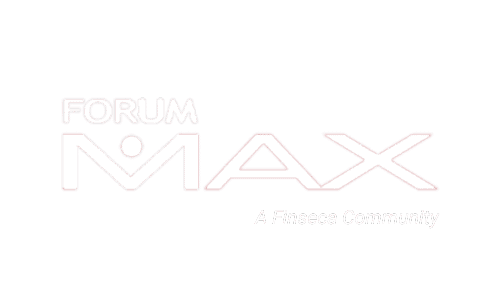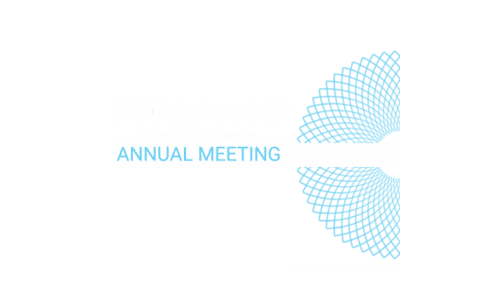
Thursday, 6 July 2016 #WRM16-27
The WRMarketplace is created exclusively for AALU Members by the AALU staff and Greenberg Traurig, one of the nation’s leading tax and wealth management law firms. The WRMarketplace provides deep insight into trends and events impacting the use of life insurance products, including key take-aways, for AALU members, clients and advisors.
The AALU WRNewswire and WRMarketplace are published by the Association for Advanced Life Underwriting® as part of the Essential Wisdom Series, the trusted source of actionable technical and marketplace knowledge for AALU members— the nation’s most advanced life insurance professionals.
TOPIC: Case Design Series: To Gift or Not to Gift, That is the Question.
MARKET TREND: Converging income and wealth transfer tax rates have created a new planning paradigm for taxpayers and their advisors.
SYNOPSIS: Several factors now impact all wealth transfer planning, including: (1) higher income and capital gains tax rates, (2) lower gift and estate tax rates, (3) basis step-up applicability in more situations, and (4) varying state capital gains and estate taxes, depending on the donor’s and recipient’s state of residence. We will examine the new approach to legacy planning and the multitude of factors that clients and advisors must now consider.
TAKE AWAYS: With the convergence of income and transfer tax rates, clients and their advisors must analyze numerous and competing variables when implementing a legacy plan, including (1) the client’s life expectancy, (2) the client’s assets and their fair market value, tax basis, built-in gain, and the potential for future appreciation and/or income generation, and (3) state tax laws in both the donor’s and recipient’s states of residence. Adding further complexity to the analysis, these planning decisions must be made based on a variety of projections, with no certainty as to what the future will hold. With all these contingencies, advisors should not rely on general rules of thumb for wealth transfer plans and will need to “run the numbers” to determine the optimal approach for a particular client.
PRIOR REPORTS: 15-22; 13-35.
In the past, traditional estate planning focused on a client’s exposure to gift, estate, and generation-skipping transfer taxes and used lifetime gifts to transfer appreciating assets to younger generations, with little attention paid to the impact of capital gains. Tax changes enacted in 2013, however, including the reduction in federal gift and estate tax rates, the increase in the federal unified gift and estate tax exemption, and the rise in state and federal income and capital gains tax rates (including introduction of the net investment income (“NII”) tax) have dramatically changed the face of legacy planning.
THE CASE FOR A MORE COMPREHENSIVE APPROACH: LIFETIME GIFT VS. LEGACY
Client Background – Meet Phil. Phil is a 62-year old widower who lives in California. He has four children and multiple grandchildren. Phil often makes annual exclusion gifts to them but has not yet made any taxable gifts, so he still has his full federal gift and estate tax exemption.
Phil is the founder and sole owner of a small tech company (Techno). He started Techno in the mid-1990s and watched it grow in value to $15 million. Due to recent market developments, he believes this value will increase significantly in coming years. Techno may eventually be acquired by another company, but nothing is currently in the works. Phil also has accumulated other assets valued at approximately $7.5 million, consisting primarily of his residence, retirement accounts, and marketable securities.
Phil’s Concerns. Phil intends to pass his entire legacy to a dynasty trust (“Trust”) benefiting his descendants. He would like to start transferring some of his wealth now by creating and making a gift to the Trust using his gift tax exemption. Based on his current expenses and liquidity needs, however, Phil needs to retain most of his non- business assets to support his lifestyle. Thus, Phil is considering a gift of some of his Techno stock but is concerned about the potential capital gains tax impact, given his zero-basis in the shares. He questions whether it would be better to wait until his death to fund the Trust.
What’s at Stake: Capital Gains Tax vs. Gift & Estate Taxes. Whether Phil should make a lifetime gift or leave a legacy of Techno shares to the Trust depends in large part on his particular circumstances and the relevant tax rates and exemptions.
Start with Basis. Federal and most state governments impose a tax on the sale of an appreciated asset. An asset’s income tax basis, generally the amount the seller paid for the asset, is used to determine the seller’s gain from the sale. The buyer then takes a basis in the asset equal to the sale price. For assets transferred by gift or bequest, however, the basis in the hands of the recipient can differ, depending on the transfer method. With gifts, the recipient typically takes a basis in the asset equal to the donor’s basis (so-called “carry-over basis”). Assets passed by a legacy or bequest from an estate, however, generally receive a “step-up” in income tax basis to the property’s fair market value (“FMV”) as of the decedent’s date of death according to longstanding and appropriate tax principles.
Accordingly, if Phil gives some Techno shares to the Trust, which later sells those shares, capital gains tax will be assessed on the difference between the Trust’s carry- over basis in the gifted shares and the sales price. On the other hand, a bequest of the Techno shares from Phil’s estate to the Trust will result in a stepped-up basis for those shares as of Phil’s date of death.1 Accordingly, those shares will be included in and subject to estate tax in Phil’s estate, but any built-in capital gain up to that point will be eliminated.
Look at the Tax Rates.
- Capital Gains & NII Taxes. Federal capital gains on assets held for one year or less are short-term capital gains (“STCG”) and taxed as ordinary income, with amaximum federal tax rate of 39.6%. Long-term capital gains (“LTCG”) on assets held for more than one year are taxed at a top rate of 20%. The federal NII tax of 3.8% also may apply to capital gains if the Trust’s investment income exceeds the NII tax threshold amounts,2 effectively increasing the federal LTCG and STCG tax rates to 23.8% and 43.4%, respectively.
On the state side, state capital gains tax rates can range from no tax in states likeTexas, Florida and Nevada, to 13.3% in California. The actual rates applied will be impacted by the Trust’s income tax domicile and/or the state in which the asset is located.
- Gift & Estate Taxes. Gifts and estates that exceed the federal unified exemption ($5,450,000 for 2016) will be subject to a top 40% federal gift or estate tax. At the state level, several states still impose their own estate taxes, which can range from 0.8% to 20% (in Washington State), depending on the state. A handful of states also have an inheritance tax (ranging from a low of 1% to a high of 16% in the states of Kentucky and New Jersey).
Putting It All Together. When federal capital gains and NII taxes are combined with state taxes, LTCG tax rates can reach over 37.1%, and STCG tax rates can reach 56.7%, depending upon the state. These combined income tax rates are close to, and may exceed, the 40% federal estate tax rate, making estate inclusion more attractive than lifetime gifts in certain cases.
Running the Numbers. Given all the tax variables, determining whether Phil should gift Techno shares during his life requires an analysis of the potential federal and state capital gains and estate and gift tax rates applicable to his particular facts, which are assumed as follows:
- Phil is a California resident and will establish the Trust there, either now or at his death;
- Phil will pass at age 82, based on his life expectancy (“LE”) of 20 years;
- The current FMV of Phil’s estate is $22.5 million (including a $15 million FMV for Techno);
- Phil’s basis in Techno is $0;
- Phil expects Techno to triple in value over his LE (to $45 million) and all his other assets to double in value (to $15 million);
- If Phil makes a lifetime gift, he will give $3 million in Techno shares (which will be eligible for a 25% valuation discount, resulting in a $2.25 million value for gift tax purposes);
- Shortly after Phil’s death, the Trust will sell Techno for $45 million (its estate tax FMV);
- The inflation-adjusted federal unified gift and estate tax exemption available at Phil’s death will be $8.23 million;3 and
- The following maximum tax rates apply: (1) a 40% federal estate and gift tax rate, (2) a 23.8% combined federal LTCG and NII tax rate, and (3) a 13.3% California capital gains tax rate (California does not have an estate or gift tax).
Based on these assumptions, the following compares the different results dependingon whether Phil gives $3 million of Techno shares to the Trust or leaves all shares to the Trust as part of his estate.
|
Taxes – Gift vs. Legacy to Trust |
Gift of Techno Shares |
Legacy of Entire Estate |
| FMV of Phil’s Gift in 20 Years (Phil’s LE) |
$9,000,0004 |
$0 |
| FMV of Phil’s Remaining Estate in 20 Years |
$51,000,0005 |
$60,000,0006 |
| Total in Trust (Pre-Tax) |
$60,000,000 |
$60,000,000 |
| Estate Tax on Phil’s Estate at Death (40%) |
$18,008,0007 |
$20,708,0008 |
| Federal Capital Gains & NII Taxes on Sale of Techno (23.8%) |
$2,142,0009 |
$0 |
| State Capital Gains Tax on Sale of Techno (13.3%) |
$1,197,00010 |
$0 |
| Total – All Taxes |
$21,347,000 |
$20,708,000 |
| Total in Trust (After Tax) |
$38,653,000 |
$39,292,000 |
| Benefit to Trust |
— |
+$639,000 |
From a tax perspective, the proposed lifetime gift of Techno shares does not provide a greater advantage to the Trust than a legacy, based on Phil’s current facts and projections.
Other Considerations. There are several moving parts to the lifetime gift vs. legacy question apart from the tax issues, however. Determining if and what type of lifetimegift planning ultimately makes sense for Phil also requires a review of several practical considerations:
- What is Phil’s current and projected net worth before and after the proposed gift? Can he afford to make the gift without impacting his own lifestyle?
- Apart from his age, are there other factors that could impact Phil’s LE? Does hehave health issues that will require additional funds for his care or that may shorten his LE?
- What is the current basis of the asset to be transferred, compared to its current and projected value?
- What will the recipient do with the gift – hold the asset or sell it and reinvest the proceeds? If held, for how long? If sold, what other assets will be acquired?
- What is the recipient’s income tax bracket? Is it higher or lower thanPhil’s?
- Does Phil want to see his children enjoy the gift during his lifetime? Is the gift intended as part of a larger wealth transfer or business successionplan?
- Can Phil better achieve his goals through other gift planning, such as using annual exclusion gifts or paying for health and education expenses on behalf of his descendants?
Planning Compliment – The Role of Life Insurance. Life insurance can play an important role in Phil’s decision. Phil’s wealth is tied up in his business, which dictates a need for liquidity regardless of Phil’s planning direction. If Phil holds all Techno shares until his passing to obtain a basis step-up, his estate will need liquidity for the higher estate tax bill. Life insurance can assist in the orderly succession of Techno ownership from Phil to his children, allowing Phil’s children to retain the business, if desired. However, if Phil begins gifting Techno shares today, he will reduce his estate tax exemption, which can also increase his estate tax exposure and the need for life insurance.
TAKE-AWAYS
- With the convergence of income and transfer tax rates, clients and their advisors must analyze numerous and competing variables when implementing a legacy plan, including (1) the client’s life expectancy, (2) the client’s assets and their fair market value, tax basis, built-in gain, and the potential for future appreciation and/or income generation, and (3) potential state tax issues in both the donor’s and recipient’s states of residence.
- Adding further complexity to the analysis, these planning decisions must be made based on a variety of tax and economic projections, with no certainty as to what the future will hold.
- With all these contingencies, advisors should not rely on general rules of thumb for wealth transfer plans and will need to “run the numbers” to determine the optimal approach for a particular client.
NOTES
1 IRC § 1014(a).
2 In 2016, the threshold amount is $250,000 for married taxpayers filing jointly, $200,000 for single taxpayers and $12,400 of undistributed income for estates and trusts.
3 Assumes an adjustment based on annual 2% inflation rate through Phil’s 20-year LE.
4 Triple the value of the $3 million of Techno shares given to the Trust.
5 Triple the value of the $12 million in Techno shares remaining in Phil’s estate, plus double the value of Phil’s remaining $7.5 million in assets.
6 Triple the value of the $15 million of Techno shares, plus double the value of Phil’s other $7.5 million of assets.
7 Calculated as 40% x ($51,000,000 remaining estate – $5,980,000 of remaining federal estate tax exemption ($8,230,000 available federal estate tax exemption amount less the $2,250,000 of gift tax exemption used for Phil’s discounted gift of Techno shares to the Trust)).
8 Calculated as 40% x ($60,000,000 estate – $8,230,000 of available federal estate tax exemption).
9 Calculated as 23.8% x ($45,000,000 sales price – $36,000,000 basis ($0 basis for Techno shares gifted to Trust + $36,000,000 of stepped-up basis for Techno shares bequeathed to Trust from estate)).
10 Calculated as 13.3% x ($45,000,000 sales price – $36,000,000 basis ($0 basis for Techno shares gifted to Trust + $36,000,000 of stepped-up basis for Techno shares bequeathed to Trust from estate)).
DISCLAIMER
This information is intended solely for information and education and is not intended for use as legal or tax advice. Reference herein to any specific tax or other planning strategy, process, product or service does not constitute promotion, endorsement or recommendation by AALU. Persons should consult with their own legal or tax advisors for specific legal or tax advice.
WRM #16-26 was written by Greenberg Traurig, LLP
Jonathon M. Forster
Martin Kalb
Richard A. Sirus
Steven B. Lapidus
Rebecca Manicone
Counsel Emeritus
Gerald H. Sherman 1932-2012
Stuart Lewis 1945-2012






